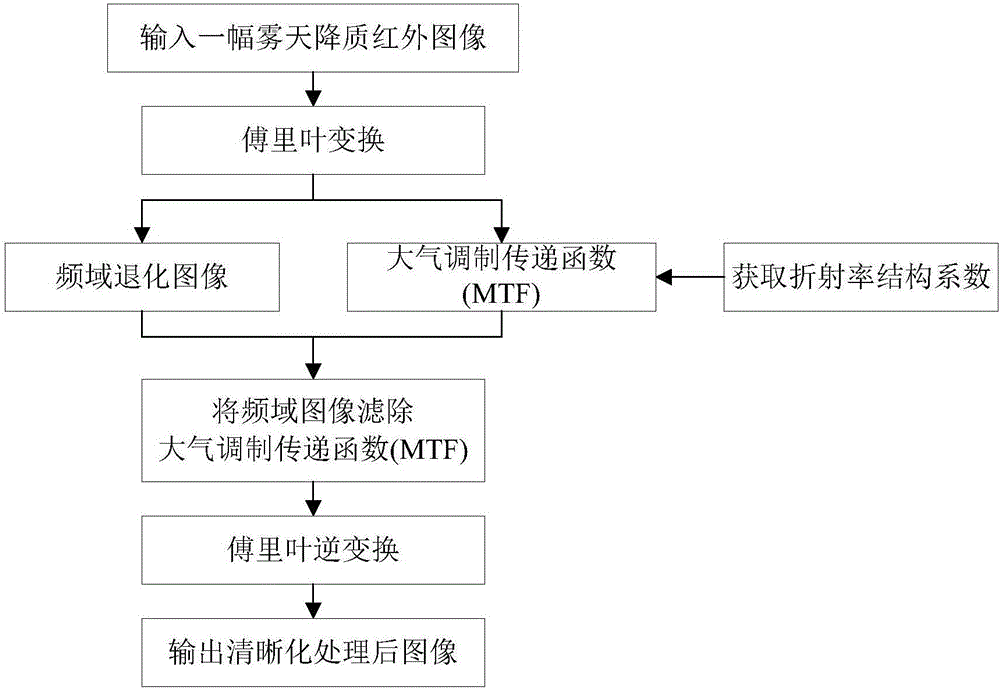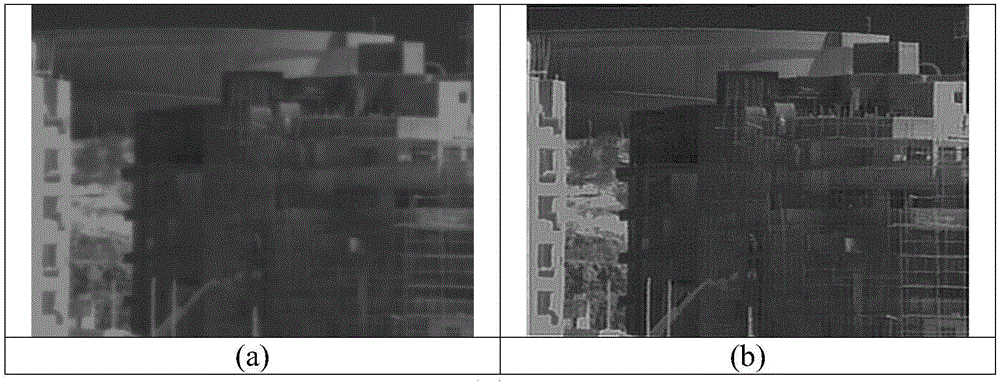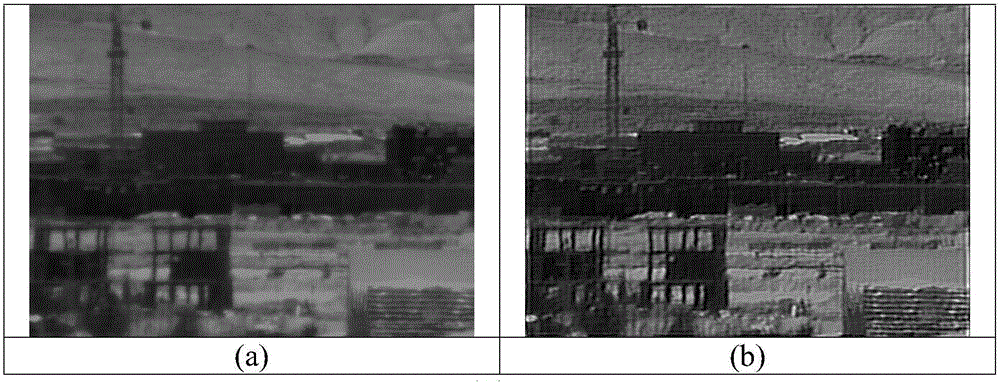Fog-degraded image sharpening method based on turbulent infrared radiation model
A technology of infrared radiation and degraded images, applied in the field of image processing, can solve problems such as excessive manual intervention, inability to detect non-heat-dissipating signals, and image contrast enhancement, and achieve the effect of simple calculation
- Summary
- Abstract
- Description
- Claims
- Application Information
AI Technical Summary
Problems solved by technology
Method used
Image
Examples
Embodiment Construction
[0062] The technical solution of the present invention improves the quality of the degraded image without increasing the hardware cost, analyzes the inverse process of degraded image generation, establishes the atmospheric radiation transfer model and the corresponding atmospheric modulation transfer function (MTF), and filters In addition to the atmospheric modulation transfer function, the clear processing of the degraded infrared image in foggy weather is completed.
[0063] Combine below Figure 1~4 , introduces the method of clearing image degraded image in foggy days based on restoration of atmospheric turbulent infrared radiation model, the specific implementation method is as follows:
[0064] Step 1: Input a foggy degraded infrared image;
[0065] Step 2: Perform Fourier transform on the image in step 1 to obtain the degraded image in the frequency domain, and then obtain the atmospheric modulation transfer function (MTF) according to the degraded image in the freque...
PUM
 Login to View More
Login to View More Abstract
Description
Claims
Application Information
 Login to View More
Login to View More - R&D
- Intellectual Property
- Life Sciences
- Materials
- Tech Scout
- Unparalleled Data Quality
- Higher Quality Content
- 60% Fewer Hallucinations
Browse by: Latest US Patents, China's latest patents, Technical Efficacy Thesaurus, Application Domain, Technology Topic, Popular Technical Reports.
© 2025 PatSnap. All rights reserved.Legal|Privacy policy|Modern Slavery Act Transparency Statement|Sitemap|About US| Contact US: help@patsnap.com



